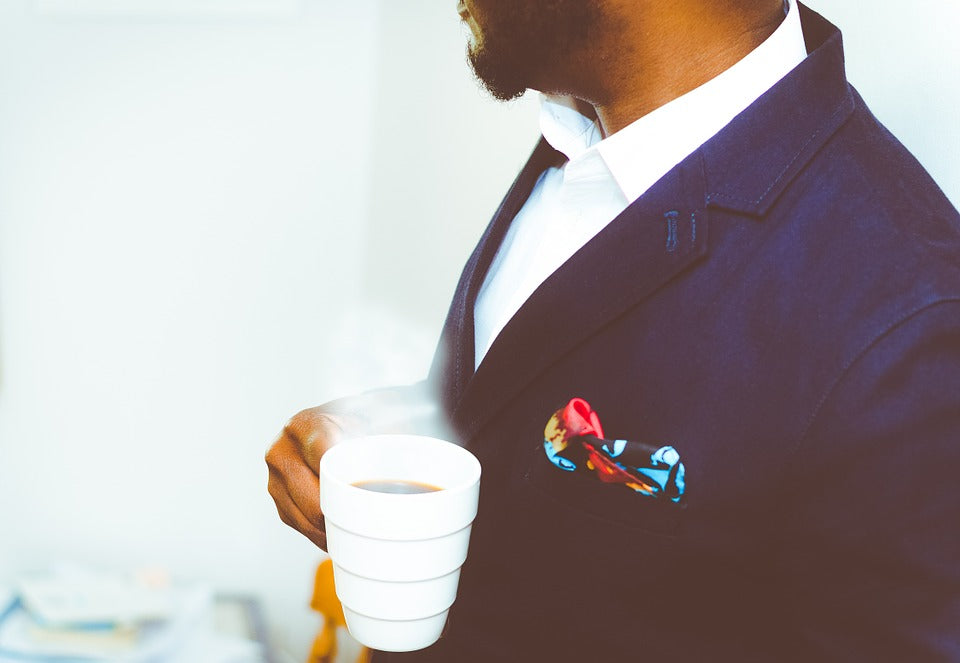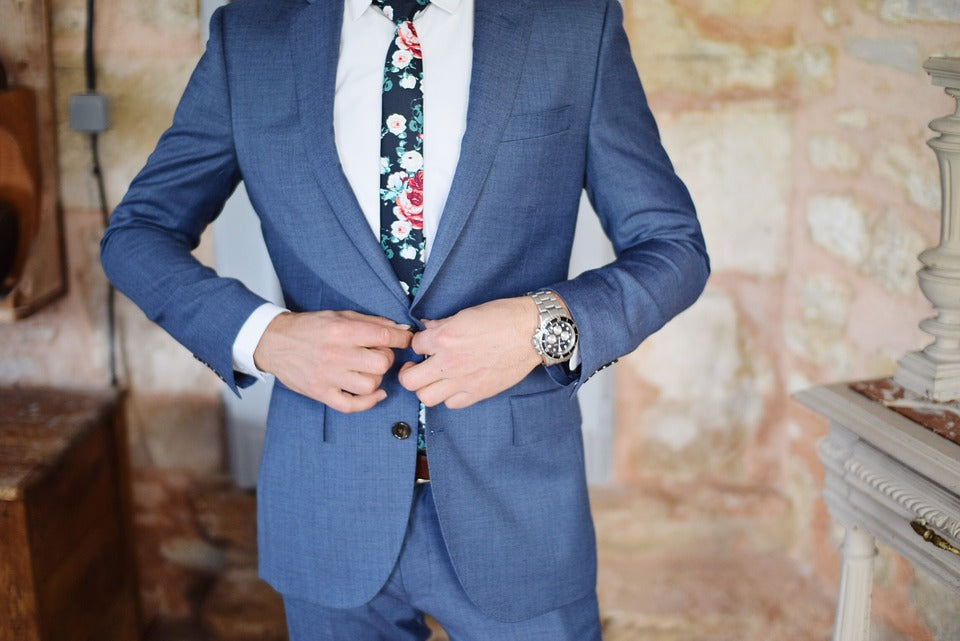A suit is a smart investment that will offer countless years of use and enjoyment. Whether you're attending a business meeting, interview, wedding, corporate event, party, etc., you'll probably need to wear one. Suits offer the highest level of formality, making them the preferred choice of men's attire for events such as these. Unless you're familiar with them, however, you may come across some rather confusing terms. So, today we're going to explore some of the common terms associated with suits, revealing their true meaning.
Herringbone
Men's suits come in a variety of different patterns, one of which is herringbone. Typically associated tweet and wool suits, it offers a distinct V-shaped pattern that's truly stunning and captivating. Some people confuse herringbone with chevron, assuming the two patterns are the same. While they share some similarities, however, herringbone is unique in the sense that it looks like a broken zigzag. Also known as broken twill weave, herringbone is an excellent choice for fashion-forward men looking to present themselves in the best manner possible.
Worsted
Another term you should be aware of when choosing a men's suit is worsted. Basically, this term refers to a high-quality yarn used in the production of men's suits and other garments. It receives its namesake from the village of Worstead, England. Back in the 12th century, Worstead, along with North Walsham and Aylsham, formed an alliance to create a manufacturing facility dedicated to the production of high-quality garments. During this period, the alliance used Worsted yarns here, which were stronger, finer, smoother and more durable than traditional sheep's wool. While Worsted doesn't necessarily originate from England today, the term is still used to describe the same high-quality fabric. Worsted is commonly used in the production of tailored suits and garments.
Single-Breasted Suit
Men's suits typically fall under one of two categories: single-breasted or double-breasted. A single-breasted suit features a suit coat or jacket with a single column of buttons along with an overlap of fabric. They usually have just two or three buttons (some have more), and a notch lapel. At the turn of the 1930s, however, peaked lapels have become less popular. In any case, the single-breasted suit is the preferred choice among many men, as it offers a timeless and classic appearance.
Double-Breasted Suit
On the other side of the fence is a double-breasted suit. Unlike its counterpart, a double-breasted suit features a suit coat or jacket with overlapping front flaps and two parallel columns of buttons. This is in stark contrast to its single-breasted counterpart, which features just one column of buttons. It's important to note, however, that one of these columns is usually for decorative purposes, while the other is function. The decorative buttons are placed on the outside edge of the coat or jacket, allowing the wearer to fasten them reversibly.

Lapels
You've probably heard of the term"lapels" before, but do you really know what it means? For most men, the answer is no. While the term is frequently used when speaking about suits, there's a great deal of confusion surrounding its definition. So, what are lapels? In the most basic sense, lapels are the folded flaps of cloth on the front of a suit jacket or coat. They are created by folding a piece of the fabric over the front of the collar and sewing it into the jacket or coat. There are several different types of suit lapels, including notched, peaked, shawl and trick. Each of these lapel types has its own unique characteristics. Notched lapels, for instance, are the least formal and commonly found on single-breasted suit jackets and coats. The peaked lapel, however, is the most formal and is commonly found on double-breasted jackets. Peaked lapels are typically used on formal tailcoats, morning coats, tuxedos and other forms of formal suit outerwear.
Vent
Another suit term that often confuses people is "vents." Basically, a vent a small slit in the bottom of a suit coat or jacket. They were usually used as a sporting option, allowing people to wear suit jackets and coats more easily while on horseback. While vents are rarely used for this purpose today, they are still included in many suit jackets and coats, only for aesthetic purposes now. There are three primary types of vents: single-vents, ventless, and double-vented. All three styles are believed to improve the look of suit jackets and coats by allowing the fabric to hang more naturally. Therefore, they are typically found on most suit jackets and coats.
Waistcoat
Also known simply as a vest, waistcoats are common worn in conjunction with men's suits. Before the 1940s, they were almost always worn with suits. However, following World War II, their popularity declined. It wasn't until the 1970s when waistcoats regained their popularity. Much like a suit jacket or coat, the bottom button of a waistcoat is typically left undone. Waistcoats may also have lapels, although there are some styles that lack this feature. Today, waistcoats are generally worn for formal occasions.
Breeches
Breeches, also known as knickers in the U.K., are an alternative to men's trousers. They are unique, however, in the sense that they are shorter, usually stopping just below the knees and fastening at the top of the calf with a button or cuff. Breeches were once the preferred choice of pants by men wearing suits. Over the years, though, their popularity has declined. Breeches are rarely worn today, with the exception of riding breeches which are worn with long boots to conceal the wearer's socks.
Pocket Square
Among the most popular accessories worn with men's suits is a pocket square. This otherwise simple and small piece of fabric can make a world of difference in the appearance of a suit. It's folded and placed in the breast pocket of a suit jacket or coat, adding new color and style to the suit. For the price, there's no cheaper or better way to accessorize a suit. Just remember to choose a pocket square that matches and flows cohesively with the rest of your suit.




